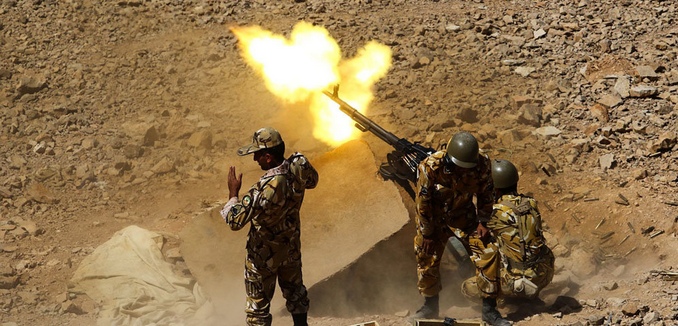A $1.7 billion payment by the U.S. to Iran that coincided with the release of American hostages in January is helping Tehran boost its military budget by 90 percent in the next year, Eli Lake of Bloomberg View reported on Thursday.
The $1.7 billion payment was transferred from a taxpayer-funded account called the Judgment Fund, which is used to pay claims against the U.S. when there is no other source of money. Iran’s Guardian Council ordered the country’s central bank to transfer the payment to the military last month.
“Article 22 of the budget for 2017 says the Central Bank is required to give the money from the legal settlement of Iran’s pre- and post-revolutionary arms sales of up to $1.7 billion to the defense budget,” explained Saeed Ghasseminejad, a research fellow at the Foundation for Defense of Democracies. The order was reported by a number of Iranian news sources.
The sum claimed by Iran came from a $400 million payment made by the government of Shah Mohammad Reza Pahlavi to buy arms from the U.S. before the 1979 Islamic Revolution in Iran. After the revolution and the seizure of the American embassy in Tehran, the U.S. cancelled the arms sale and the money remained in a trust. In order to meet Iranian claims, the U.S. paid $1.7 billion to cover the initial payment plus $1.3 billion in interest for the past 36 years.
Rep. Mike Pompeo (R – Kan.) has called for an investigation into the payment because of its proximity to the release of Washington Post reporter Jason Rezaian, Pastor Saeed Abedani, Amir Hekmati, and two others from Iranian prisons. A few days after the hostages were freed and the funds were transferred to Iran, The Wall Street Journal reported that there were growing concerns that the money was in fact a ransom payment.
While the Obama administration claims the payments and the hostage release was unrelated, Brig. Gen. Mohammad Reza Naqdi, commander of Iran’s Basij militia, identified the payment as a ransom in January. “This money was returned for the freedom of the US spy and it was not related to the [nuclear] negotiations,” Naqdi said.
“The fact that U.S. taxpayers appear to be funding Iran’s military is outrageous,” Pompeo told Lake.
The influx of money will help raise Iran’s military spending to $19 billion in 2017, a 90 percent spike from 2016. Lake characterized this boost as an “irony,” which comes as Iran’s leaders are alleging that they haven’t received the benefits they were expecting from last year’s nuclear deal.
Ghasseminenad wrote in greater detail about Iran’s military budget in a policy brief last week.
U.S. Treasury Secretary Jack Lew said in April of last year that “Iran is expected to use new revenues chiefly to address those needs, including by shoring up its budget, building infrastructure, maintaining the stability of the rial, and attracting imports,” rather than funding terrorism. President Barack Obama similarly said last August in his speech at American University that “our best analysts expect the bulk of this revenue to go into spending that improves the economy and benefits the lives of the Iranian people.”
[Photo: Mehr News ]




